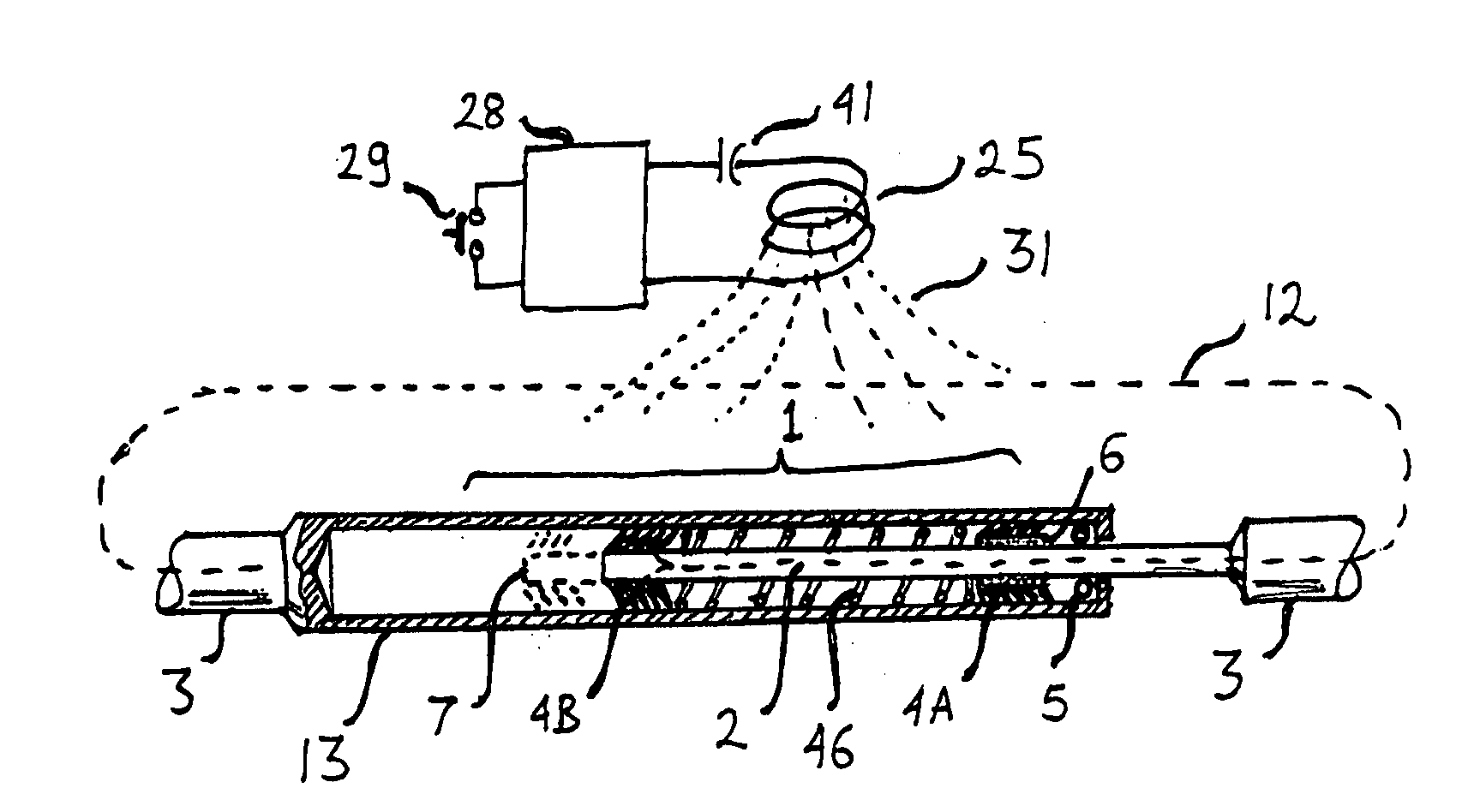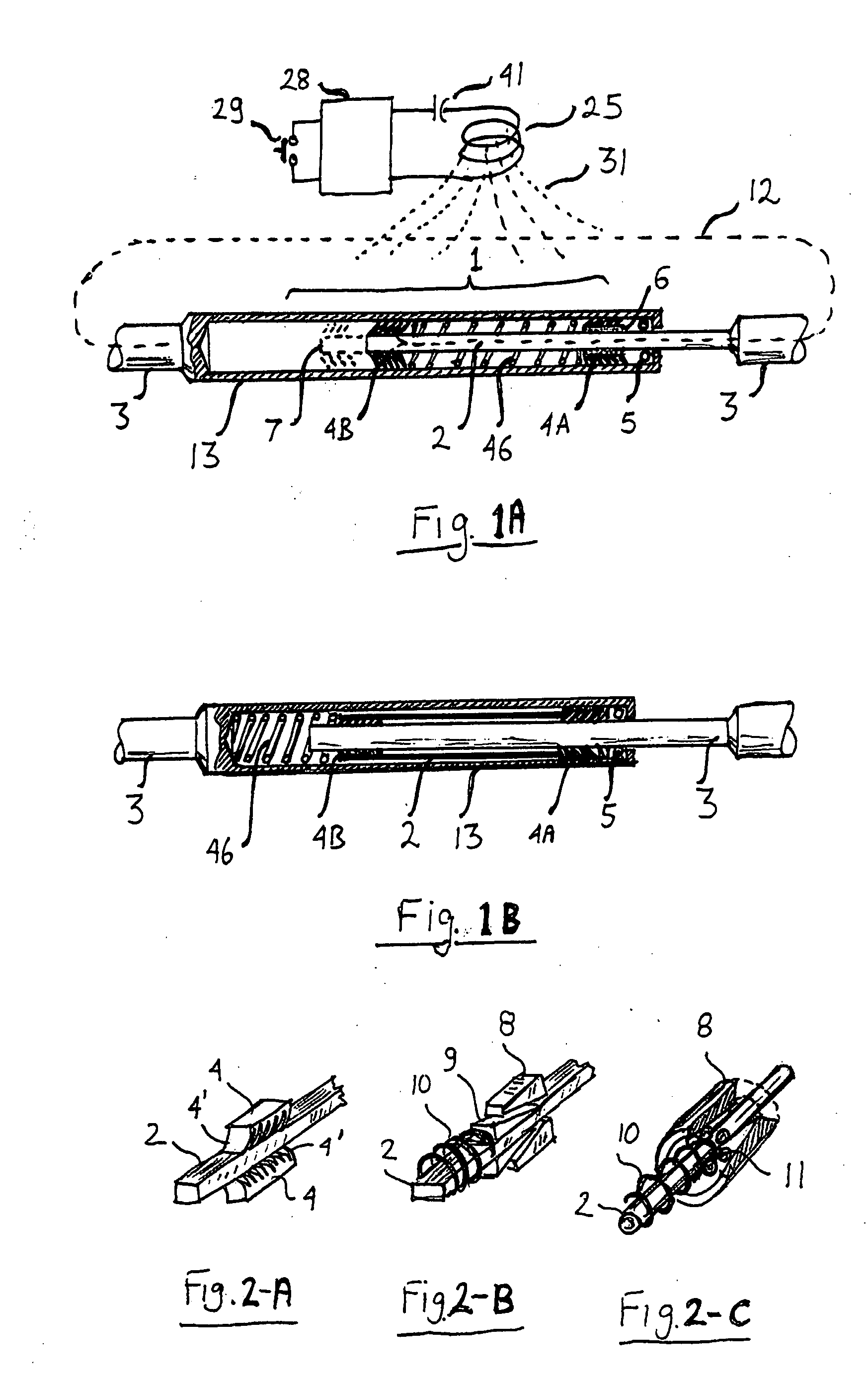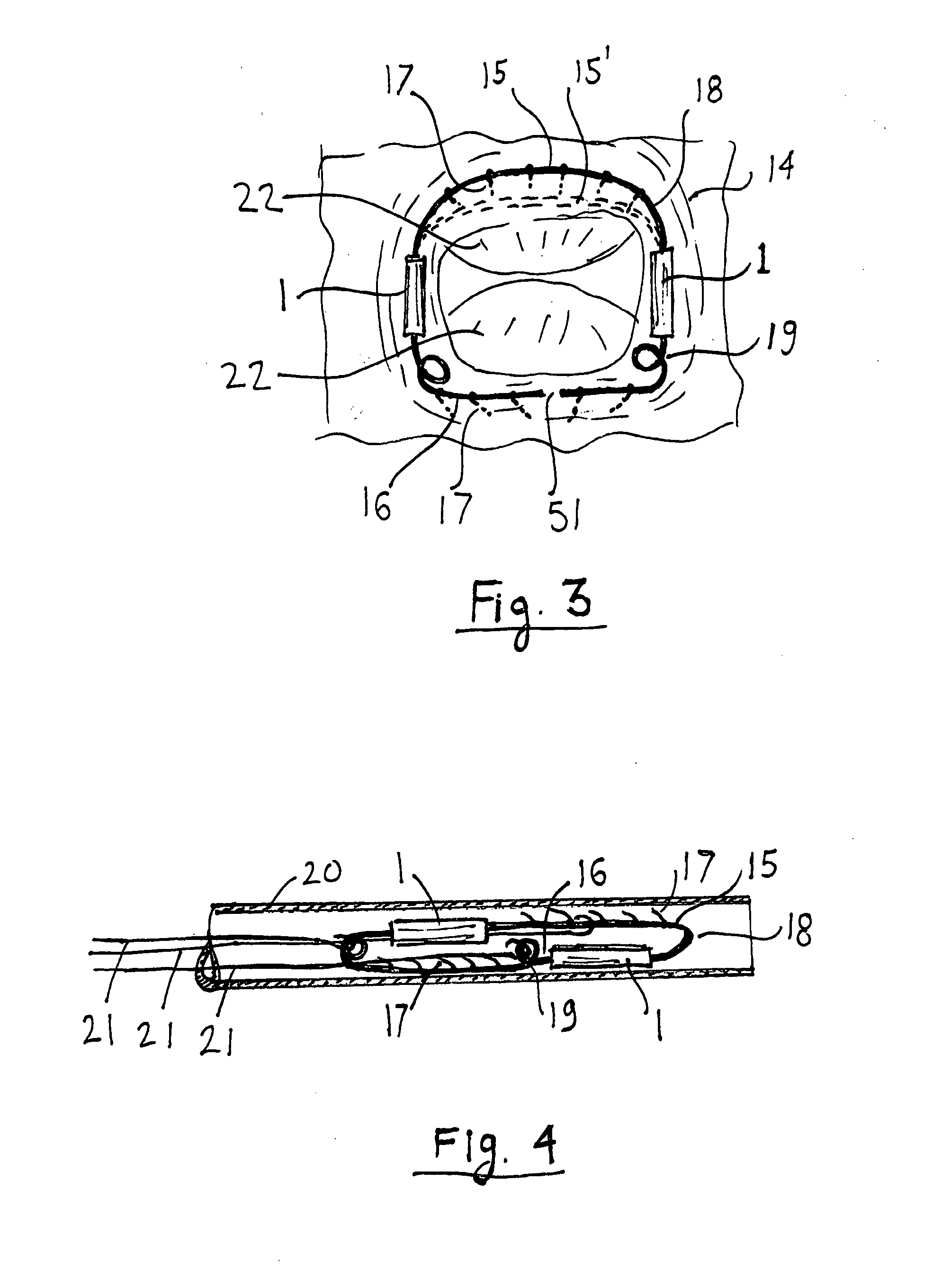System for mechanical adjustment of medical implants
a technology for mechanical adjustment and implants, applied in the medical field, can solve problems such as uncontrollable well
- Summary
- Abstract
- Description
- Claims
- Application Information
AI Technical Summary
Benefits of technology
Problems solved by technology
Method used
Image
Examples
Embodiment Construction
[0018]Referring to FIGS. 1A and 1B, a stepping actuator 1 contains element 2 capable of changing length as a response to changes in an external magnetic field or in response to heating induced by a changing magnetic field. Element 2 can be made of a highly magnetostrictive alloy such as Terfenol-D or from a Shape Memory Alloy (SMA) such as specially treated Nitinol. Terfenol-D is commercially available in a wide range of sizes from Etrema (www.etrema-usa.com). It can change length by up to 0.15% in response to a magnetic field of about 0.3 Tesla. Depending on the crystal orientation it can be made to increase or decrease length when magnetized. Newer types of magnetostrictive alloys, such as Ni—Mn—Ga alloy can be used for larger motions than Terfenol-D but they are not as readily available. SMA actuator wires, also known as “muscle wires”, “Nitinol actuator wire” and “Flexinol”, contract by up to 5% when heated and return to the original length when allowed to cool. For this disclos...
PUM
 Login to View More
Login to View More Abstract
Description
Claims
Application Information
 Login to View More
Login to View More - R&D Engineer
- R&D Manager
- IP Professional
- Industry Leading Data Capabilities
- Powerful AI technology
- Patent DNA Extraction
Browse by: Latest US Patents, China's latest patents, Technical Efficacy Thesaurus, Application Domain, Technology Topic, Popular Technical Reports.
© 2024 PatSnap. All rights reserved.Legal|Privacy policy|Modern Slavery Act Transparency Statement|Sitemap|About US| Contact US: help@patsnap.com










